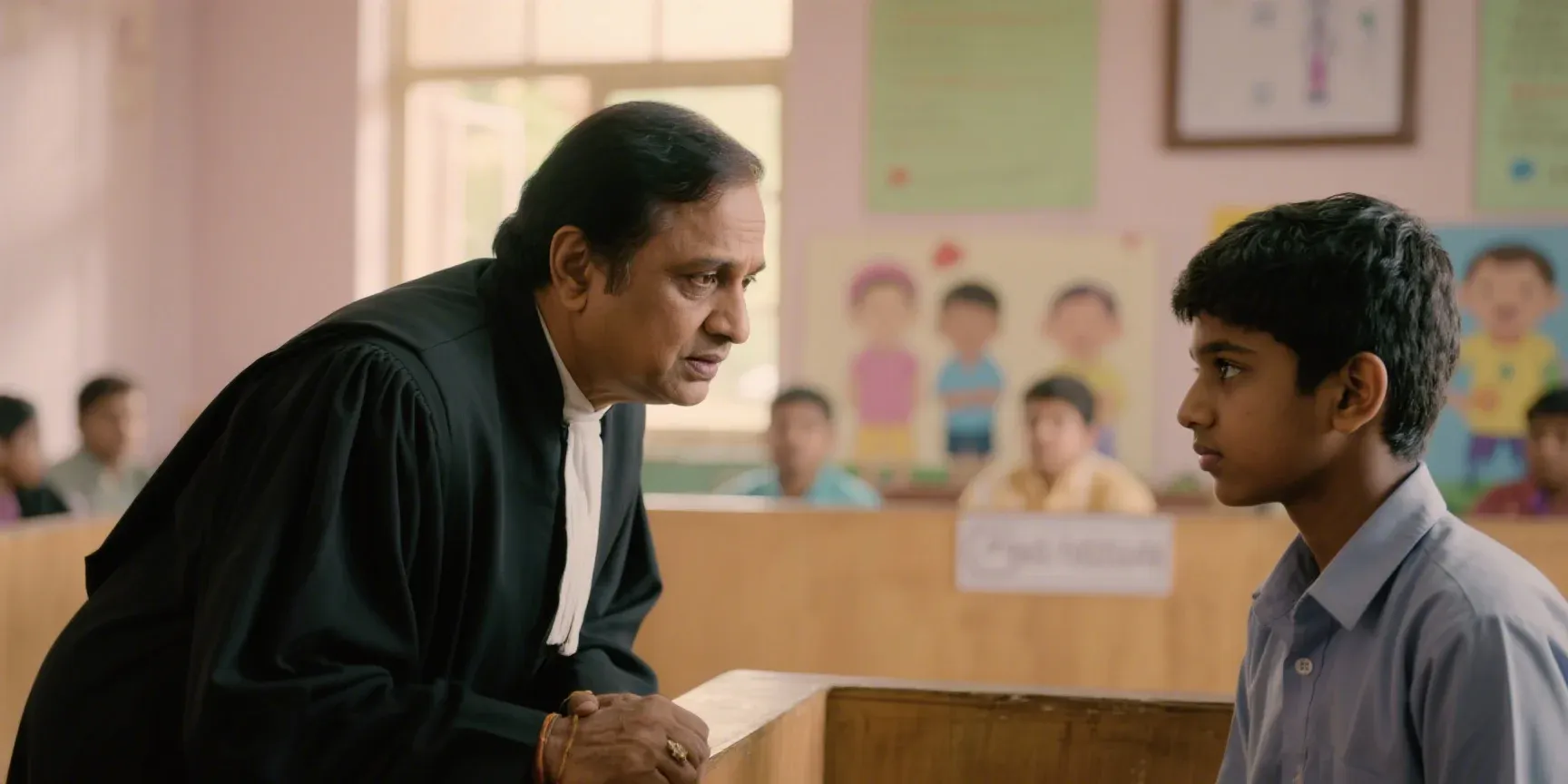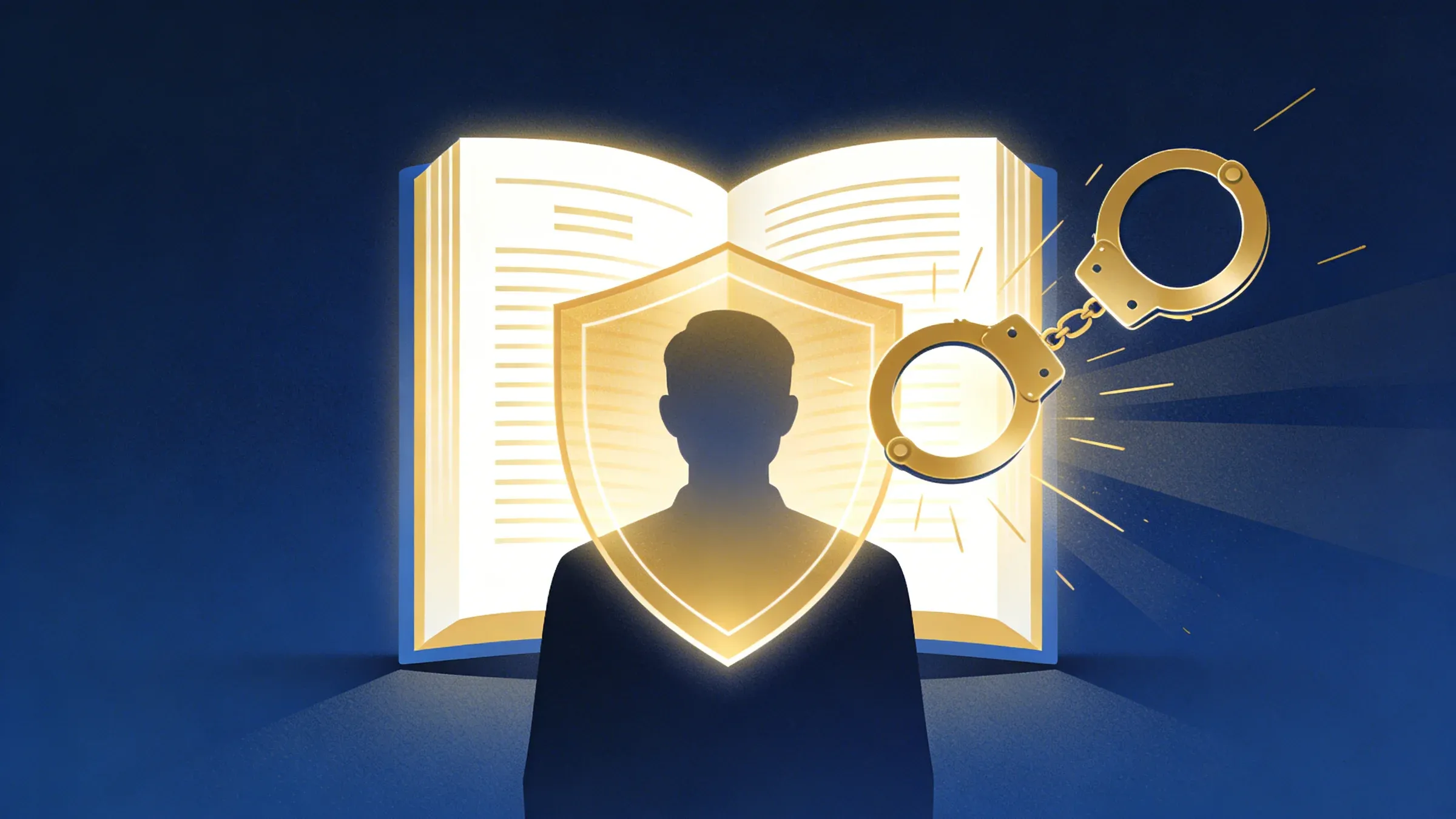
A Comprehensive Guide to India's Juvenile Justice Act, 2015
Explore a comprehensive analysis of India's Juvenile Justice (Care and Protection of Children) Act, 2015, detailing its landmark changes, the provisions for trying juveniles as adults for heinous offenses, the critical role of the Juvenile Justice Board, and the stringent penalties for cruelty to children under Section 75.
The Juvenile Justice (Care and Protection of Children) Act, 2015 (“JJ Act, 2015”) stands as a pivotal piece of legislation in India, reshaping the landscape of juvenile law. Repealing the earlier Juvenile Justice Act of 2000, this comprehensive statute aims to provide a robust framework for the care, protection, development, treatment, and social reintegration of children. It distinctly addresses two categories of children: “children in conflict with the law” and “children in need of care and protection.” Grounded in a child-friendly approach, the Act prioritizes the best interests of the child in all legal proceedings and aligns with international standards such as the Convention on the Rights of the Child and the Beijing Rules (United Nations Standard Minimum Rules for the Administration of Juvenile Justice, 1985).
The enactment of the 2015 Act was largely spurred by a national debate following heinous crimes committed by individuals in the 16-18 age group, most notably the 2012 Delhi gang-rape case. This led to a significant shift in how the law treats older adolescents involved in serious offenses, while also strengthening the overall child protection framework.
From 2000 to 2015: Key Changes in the Juvenile Justice Act
The JJ Act, 2015 introduced several transformative changes compared to its predecessor, the JJ Act, 2000. These modifications reflect a paradigm shift in addressing juvenile delinquency and child welfare.
A New Approach to Heinous Offenses
The most debated and significant change is the provision allowing for juveniles aged 16 to 18 to be tried as adults for “heinous offenses.” The 2015 Act categorizes offenses to bring clarity to the legal process:
- Petty Offenses: Offenses with a maximum punishment of up to three years of imprisonment.
- Serious Offenses: Offenses with imprisonment for three to seven years.
- Heinous Offenses: Offenses with a minimum punishment of seven years or more.
For a child between 16 and 18 years alleged to have committed a heinous offense, the Juvenile Justice Board (JJB) is mandated to conduct a preliminary assessment. This assessment evaluates the child’s mental and physical capacity to commit the offense, their ability to understand the consequences, and the circumstances surrounding the act. If the JJB deems it necessary, the case can be transferred to a Children’s Court (a designated Sessions Court) for trial as an adult. However, even if tried as an adult, the child cannot be sentenced to death or life imprisonment without the possibility of release. This is a stark departure from the 2000 Act, which treated all individuals under 18 uniformly, with a maximum sentence of three years in a special home.
Upholding the Presumption of Innocence and Age Determination
The 2015 Act strongly reiterates the principle of presumption of innocence for all children up to the age of 18. It also provides a clear and hierarchical process for age determination, giving precedence to school records and birth certificates over medical tests like ossification. This structured approach aims to prevent wrongful treatment of children as adults. The claim of juvenility can be raised at any stage of the legal proceedings, even after the final disposal of the case, underscoring the law’s protective stance.
Streamlining Adoption
Recognizing the need for a more efficient and regulated adoption process, the 2015 Act introduced a dedicated chapter on adoption. It established the Central Adoption Resource Authority (CARA) as a statutory body to oversee and regulate both in-country and inter-country adoptions. This move aims to streamline procedures for orphaned, abandoned, and surrendered children, ensuring their right to a family. The Act empowers District Magistrates to issue adoption orders, simplifying the legal formalities.
Stricter Penalties for Offenses Against Children
The JJ Act, 2015 imposes more stringent punishments for various offenses committed against children. This includes cruelty, using children for begging, trafficking, and involving them in illegal activities or with militant groups. These enhanced penalties are a testament to the Act’s commitment to safeguarding children from exploitation and abuse.
The Pillars of Juvenile Justice: JJB and CWC
The implementation of the JJ Act, 2015 rests heavily on two crucial bodies: the Juvenile Justice Board (JJB) and the Child Welfare Committee (CWC).
The Juvenile Justice Board (JJB): Adjudication and Care
Constituted in every district, the JJB is the primary body for dealing with children in conflict with the law.
Composition: Each Board comprises a Metropolitan or Judicial Magistrate of the First Class and two social workers, at least one of whom must be a woman. This blend of legal expertise and social work perspectives ensures a holistic and child-sensitive approach.
Powers and Functions: The JJB holds extensive powers, equivalent to those of a Magistrate’s court. Its responsibilities are multifaceted and include:
- Ensuring the child’s rights are protected throughout the legal process.
- Providing legal aid to the child.
- Conducting inquiries and disposing of cases in a timely and child-friendly manner.
- Ordering social investigations to understand the child’s background.
- In cases of heinous offenses by children aged 16-18, conducting a preliminary assessment to determine if they should be tried as an adult.
- Conducting regular inspections of correctional facilities.
- Passing orders for the child’s rehabilitation and social reintegration, including an individual care plan.
The Child Welfare Committee (CWC): For Children in Need of Care and Protection
The CWC is the cornerstone of the child protection framework for children who are not in conflict with the law but are in need of care and protection. This includes orphaned, abandoned, lost, and abused children.
Composition: Similar to the JJB, each district has a CWC consisting of a chairperson and four other members, with at least one woman and one expert on child matters.
Powers and Functions: The CWC has the final authority on matters concerning the care, protection, treatment, development, and rehabilitation of vulnerable children. Its key functions include:
- Taking cognizance of cases of children in need of care and protection.
- Conducting inquiries to determine the best course of action for the child.
- Placing children in institutional care, foster care, or with fit persons.
- Working towards the restoration of children to their families.
- Declaring children legally free for adoption.
- Coordinating with various agencies, including the police and labor department, to ensure child welfare.
A Closer Look at Section 75: Cruelty to a Child
Section 75 of the JJ Act, 2015 is a critical provision that penalizes cruelty to children. It holds accountable anyone who has actual charge of or control over a child and assaults, abandons, abuses, or willfully neglects them, causing unnecessary mental or physical suffering.
The punishments prescribed under this section are stringent and tiered:
- General Punishment: Imprisonment for up to three years, a fine of one lakh rupees, or both.
- Aggravated Punishment: If the offense is committed by a person in a childcare institution, the punishment is rigorous imprisonment up to five years and a fine of up to five lakh rupees.
- Severe Harm: If the cruelty leads to physical incapacitation, mental illness, or a risk to the child’s life, the punishment is rigorous imprisonment for a term of not less than three years, extendable to ten years, and a fine of five lakh rupees.
A significant proviso offers protection to biological parents who abandon a child due to circumstances beyond their control, presuming such abandonment is not willful.
Rehabilitation and Aftercare: A Path to Reintegration
The JJ Act, 2015 places a strong emphasis on the rehabilitation and social reintegration of children. The ultimate goal is to reform and empower children to become contributing members of society. The process of rehabilitation is guided by an individual care plan for each child and preferably takes place through family-based care, such as restoration to family, adoption, or foster care.
Recognizing that the transition from institutional care to independent life can be challenging, the Act includes provisions for “aftercare.” This support system is for young adults between the ages of 18 and 21 who have left institutional care. It can include financial assistance, help with education and vocational training, and finding suitable accommodation to facilitate their successful reintegration into mainstream society.
Landmark Judicial Pronouncements: The Case of Om Prakash
The judiciary has played a crucial role in interpreting and upholding the principles of the JJ Act. The case of Om Prakash @ Israel @ Raju @ Raju Das v. Union of India is a landmark judgment that underscores the importance of correctly determining juvenility.
In this case, the appellant, Om Prakash, was convicted of a heinous crime. Despite his repeated pleas of juvenility, supported by evidence, he was tried as an adult. The Supreme Court, in a 2025 judgment, found that a grave injustice had occurred due to the failure of the courts at various levels to properly consider his claim of being a minor at the time of the offense.
The Court emphasized that the claim of juvenility can be raised at any stage and must be determined based on the hierarchical evidence prescribed in the Act. It reiterated that the protection afforded to juveniles is aimed at their rehabilitation, not punishment. The Supreme Court set aside the sentence imposed on Om Prakash that was beyond the maximum permissible for a juvenile and ordered his immediate release, highlighting that a mistake by the court should not prejudice any individual. This judgment serves as a powerful reminder of the judiciary’s duty to diligently uphold the benevolent spirit of the Juvenile Justice Act.
Conclusion: A Forward-Looking Legislation with Challenges
The Juvenile Justice (Care and Protection of Children) Act, 2015 is a progressive and comprehensive law that seeks to create a more just and humane system for children in India. By categorizing offenses, establishing specialized bodies like the JJB and CWC, streamlining adoption, and focusing on rehabilitation, the Act takes significant strides in child protection.
However, the provision to try juveniles as adults for heinous offenses remains a subject of intense debate, with some arguing that it contradicts the rehabilitative ethos of juvenile justice. The effective implementation of the Act across the country, ensuring that all institutions are well-equipped and personnel are adequately trained, also remains a challenge.
Despite these challenges, the JJ Act, 2015 represents a crucial step forward in India’s commitment to safeguarding the rights and future of its children. It is a dynamic piece of legislation that will continue to evolve through judicial interpretation and societal discourse, striving to strike a delicate balance between justice for victims and the restorative needs of children.
Frequently Asked Questions (FAQ)
1. What is the main purpose of the Juvenile Justice (Care and Protection of Children) Act, 2015?
The primary purpose of the JJ Act, 2015 is to provide a comprehensive legal framework for the care, protection, development, treatment, and social reintegration of children in conflict with the law and children in need of care and protection. It aims to do so through a child-friendly approach, keeping the best interests of the child as the foremost consideration.
2. What are the key differences between the JJ Act, 2000 and the JJ Act, 2015?
The most significant difference is the provision in the 2015 Act to try juveniles aged 16-18 as adults for heinous offenses after a preliminary assessment by the Juvenile Justice Board. The 2015 Act also introduced a clear categorization of offenses (petty, serious, and heinous), streamlined adoption procedures by giving statutory status to CARA, and prescribed stricter penalties for offenses against children.
3. Who is considered a “child” under the JJ Act, 2015?
A “child” under the JJ Act, 2015 is any person who has not completed eighteen years of age.
4. What is the role of the Juvenile Justice Board (JJB)?
The JJB is a district-level authority that deals exclusively with children who are alleged to have committed an offense. Its functions include conducting inquiries, ensuring the child’s rights are protected, ordering social investigations, and determining the appropriate course of action, which can range from rehabilitation to, in specific cases, transferring the case to a Children’s Court.
5. What is the function of the Child Welfare Committee (CWC)?
The CWC is a district-level body responsible for children in need of care and protection. This includes children who are orphaned, abandoned, abused, or in any other vulnerable situation. The CWC makes decisions regarding their care, protection, treatment, development, and rehabilitation.
6. How are offenses categorized under the JJ Act, 2015?
The Act categorizes offenses into three types:
- Petty offenses: Maximum punishment of up to 3 years imprisonment.
- Serious offenses: Imprisonment between 3 to 7 years.
- Heinous offenses: Minimum punishment of 7 years or more.
7. Can a child aged 16-18 be tried as an adult for any crime?
No, a child in the 16-18 age group can only be considered for trial as an adult if they are alleged to have committed a “heinous offense.” The Juvenile Justice Board must first conduct a preliminary assessment of the child’s mental and physical capacity and understanding of the consequences before deciding to transfer the case to a Children’s Court.
8. What is the process for adoption under the JJ Act, 2015?
The Act streamlines adoption by establishing the Central Adoption Resource Authority (CARA) as the central body for regulating adoptions. Prospective adoptive parents can register online through the Child Adoption Resource Information and Guidance System (CARINGS). The process involves a home study report, matching with a child legally free for adoption, and obtaining an adoption order from the District Magistrate.
9. What is “aftercare” in the context of the JJ Act?
Aftercare refers to the support provided to young adults between the ages of 18 and 21 who have left institutional care. This support can be financial or otherwise and is aimed at helping them reintegrate into society, pursue education or employment, and live independently.
10. What did the Supreme Court rule in the Om Prakash case?
In the Om Prakash case, the Supreme Court ruled that a grave injustice had occurred because the appellant’s claim of being a juvenile at the time of the offense was not properly adjudicated by the lower courts. The Court emphasized that the plea of juvenility can be raised at any stage and that the benevolent provisions of the JJ Act must be upheld. It ordered the immediate release of the appellant, who had been incarcerated for over two decades, reinforcing the principle of rehabilitation over retribution for juveniles.


